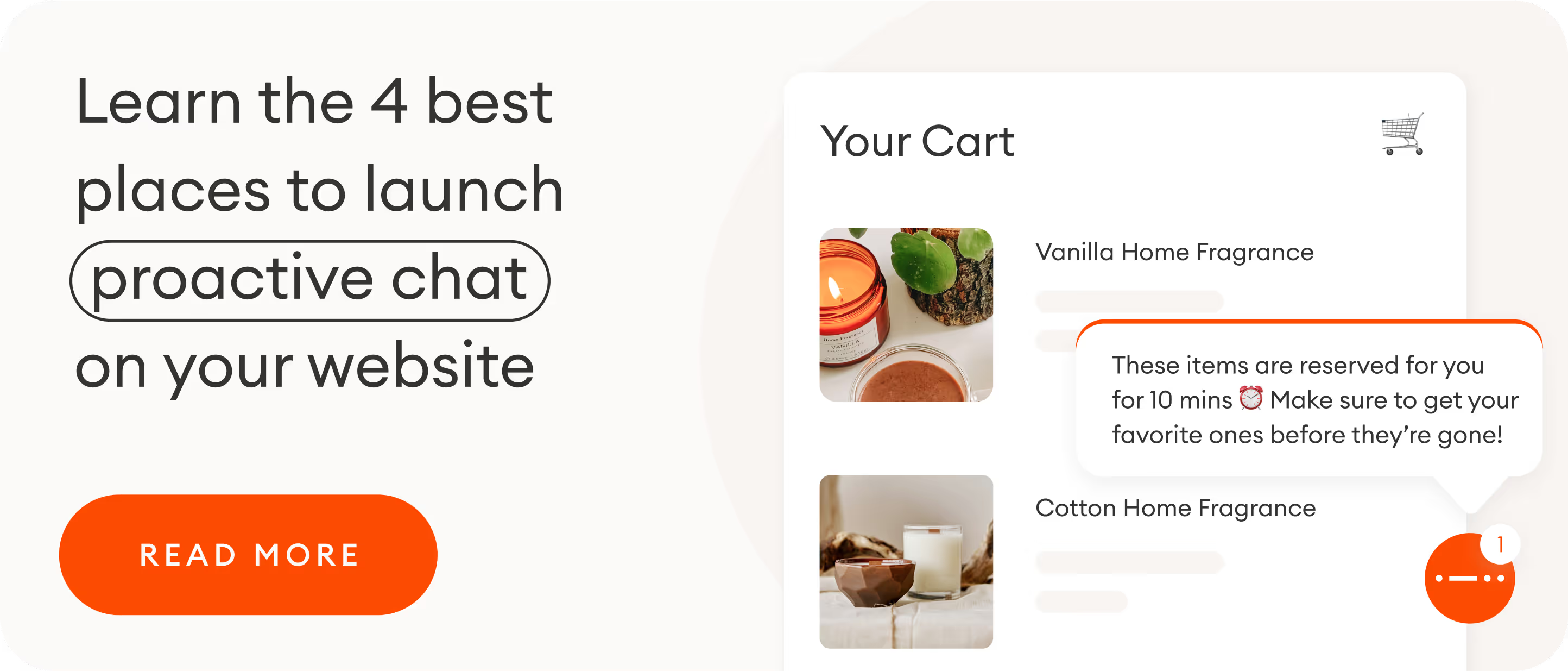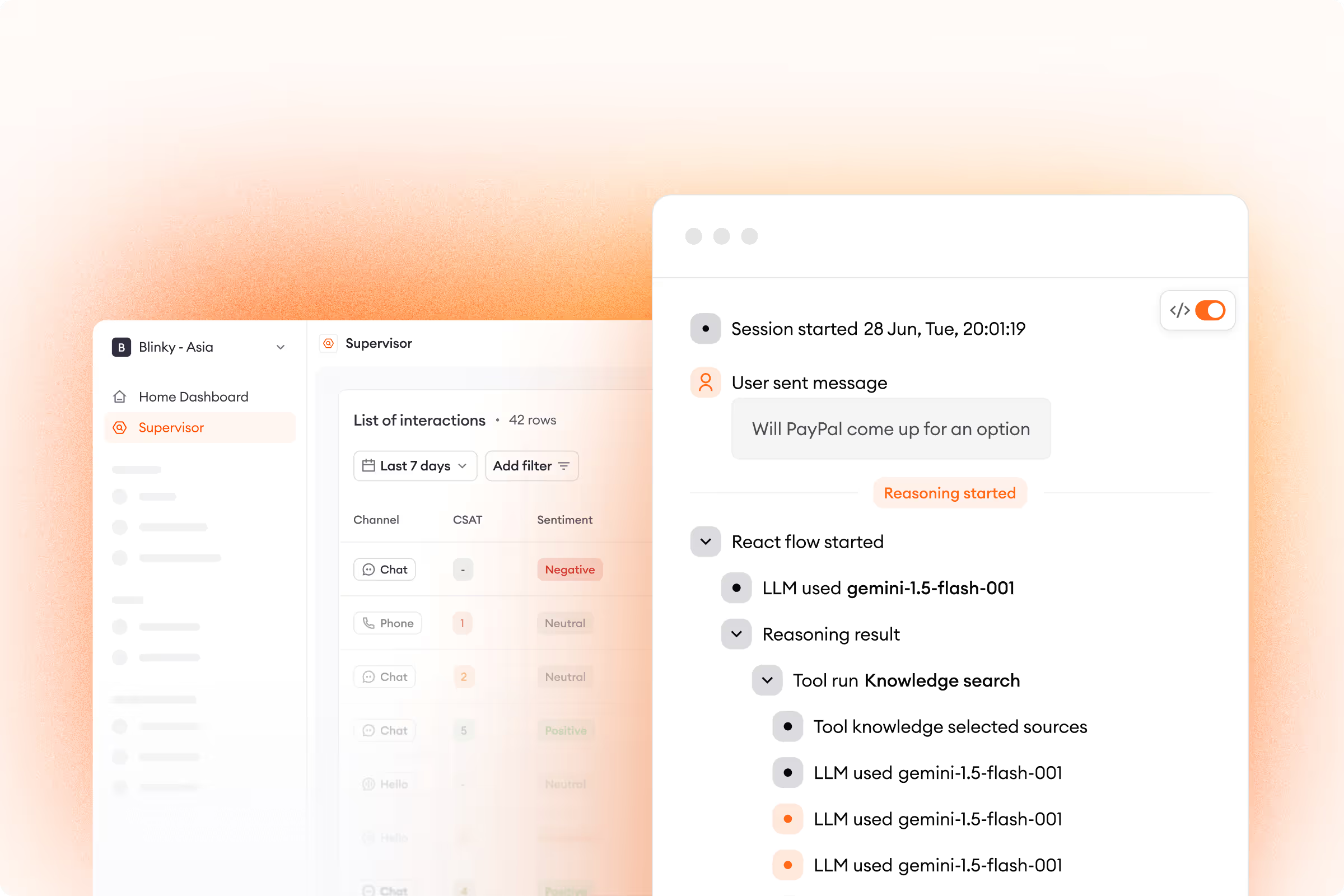Ecommerce has fundamentally changed the way consumers shop. No longer restricted by location, store hours, or even what’s in stock, chances are, if you can think it, you can find it online.
This ability to get just about anything, anytime, anywhere, has seen ecommerce sales continue to skyrocket. Analysts are predicting another year of double-digit growth and expect online sales to top $7T in 2026.
With great opportunity, however, comes untold competition. Today there are around 24 million ecommerce websites (and counting) — many of which are competing for the same consumer attention and disposable income.
Businesses that are able to achieve sustained revenue growth in this hyper-competitive environment don’t do so with excellent products alone. Rather, they combine this with an exceptional customer experience — one that makes the most of each interaction, builds brand loyalty, and ultimately boosts their bottom line.
Customer service can serve as this magic elixir. In this blog, we’ll outline 7 support-driven strategies to set you up for repeatable success.
7 Support-Driven Ecommerce Growth Strategies
1. Make it easy for shoppers to get in touch with you instantly
Nobody wants to wait in a long queue or spend time searching for a phone number that doesn’t exist. Customers expect an immediate response when they have a question or a complaint.
By delivering instant, accurate resolutions to their incoming questions, you’re able to build consumer trust, increase satisfaction, and even generate positive word-of-mouth referrals. In today’s landscape of seemingly endless choices, this ability to rapidly address customer needs has become table stakes for growing ecommerce businesses.
To get there, many businesses have turned to AI-powered chatbots with automation capabilities. Chatbots are the most cost-effective way to provide instant, 24/7 support to a global audience. Because of this, they are quickly becoming the preferred channel of choice, with 80% of shoppers reporting they’ve had a positive experience with this technology.
2. Personalize each interaction
No customer wants to feel like another cog in the wheel. Instead, each interaction needs to be viewed as an opportunity to have a meaningful exchange, one that’s tailored to their specific needs and profile. When done right, these conversations can help build stronger relationships and contribute to key growth metrics such as higher conversion rates and average order value (AOV).
For example, when an existing customer comes to your site, can you greet them by name or ask how they’re enjoying their latest purchase? Going deeper, are you able to recommend new products based on their past purchases or notify them that an item they previously looked at is back in stock? Finally, are you able to quickly call up their sizing or favorite colors and let them know about any deals or specials you might be having? Doing so can help deliver a positive customer experience and generate sales.
The kicker: Today’s leading customer support tools can detect these situations and automatically launch the appropriate workflow.

3. Win the support metrics battle
Leading ecommerce brands have made tracking great customer experiences a science. To do so, they’re constantly monitoring key support metrics and adjusting accordingly.
Happy customers are repeat customers. According to a Salesforce survey, roughly 90% of customers who have a positive experience on your site are more likely to make a second purchase.
So how do you get there? Tracking first response time (FRT) is a great place to start, but it shouldn’t be the only metric you’re using. You should also be taking into account things like:
- First contact resolution (FCR), which monitors who gets their issue resolved on their first interaction
- Customer satisfaction scores (CSAT), which tracks how pleased someone is with their experience
- Net promoter scores (NPS), which tells you how likely someone is to recommend your company to others
For more great tips, check out our blog, The Top 6 Customer Support Metrics You Should be Measuring.
4. Upsell and cross-sell through customer support
Businesses that can empower reps in their customer support team to become product experts gain an invaluable customer-facing resource. When armed with in-depth product and customer data (for both new and existing customers), they're able to provide accurate and relevant information to help consumers make informed purchasing decisions and ultimately boost customer acquisition. For example, AI-powered customer service solutions can put your entire catalog at your agents’ fingertips and provide key insights on the individuals they’re speaking with. Combined, agents can now instantly answer incoming product questions without needing to search a database or send shoppers to an FAQ page. This ability to correctly answer any question that comes your way helps put shoppers’ minds at ease and greatly increases the chance they’ll convert at this key point in the customer journey.
Furthermore, AI tools can help support reps make personalized recommendations on additional products based on the shopper’s cart, past purchases, or on-site browsing. Regarding what this can do for upsell and cross-sell opportunities, 35% of Amazon’s revenue comes directly from product suggestions.
5. Implement a proactive support strategy
Another ecommerce growth strategy involves transforming your reactive customer support into proactive assistance. Don’t wait for customers to come to you with questions or complaints. Instead, identify those who are most likely to abandon the process and contact them before they do so.
For instance, let’s say a customer added a product from your site to their cart. Rather than completing the purchase, they opened a new tab. Perhaps they did so to compare prices, check reviews, conduct additional research, or just got distracted with something else. Regardless, it can be difficult to regain their attention once they've left your site. This is where having a proactive support strategy is key.
With AI-powered proactive chat, you can automatically ping this shopper with the goal of drawing them back to your site. Once back, you have another chance for customer engagement in order to finalize this conversion, whether that’s by offering an incentive, answering key questions, or even connecting them with a dedicated product specialist. This can help prevent cart abandonment and turn would-be lost conversions into new customers.

6. Deliver a seamless omnichannel experience
Bringing customers a truly omnichannel experience is an often overlooked ecommerce growth strategy. Roughly 71% of online shoppers expect consistent service across all of a business’s channels, but only 29% are actually getting it.
In developing your customer service strategy, ensure it can deliver a seamless experience across all channels. This means whether a customer contacts you via email, social media, or chat, all of their information can be stored in one place — allowing your customer support team to quickly pull up everything from tracking information to purchase history. By bringing customers this level of service they’ve come to expect, omnichannel interconnectivity boosts satisfaction, increases customer loyalty, and can lead to a boost in overall sales.

7. Leverage customer feedback to make improvements
Some of the best growth strategies come directly from a brand’s customer base. Ecommerce companies that systematically collect and act on customer feedback can uncover the pain points and potential solutions that matter most to shoppers.
Focus groups, consumer surveys, and social media posts are great ways to capture your customers’ needs, also known as the voice of the customer (VOC). Businesses can then use this information to recreate positive experiences, identify gaps in their product offerings, or rectify any common hurdles leading to cart abandonment.
Today, AI tools can be used to automate this formerly time-consuming and labor-intensive process. Generate meaningful insights in real-time with AI-powered customer service software that’s designed to not only monitor quality assurance but also track your progress and propose steps of its own to help determine the best course of action.

Unleash ecommerce growth with AI
Online companies seeking a scalable, sustainable growth strategy need look no further than to their customer service. Excellent, efficient support lies at the heart of several ecommerce growth tactics that, when backed by AI, can be implemented in a single day.
Don’t view your customer support team as a cost center. Zowie’s AI customer service suite is built specifically for ecommerce brands who want to unlock their customer service team’s revenue-generating potential and boost their bottom line.
Book a demo today to see what kind of growth you can achieve with AI.
.avif)







